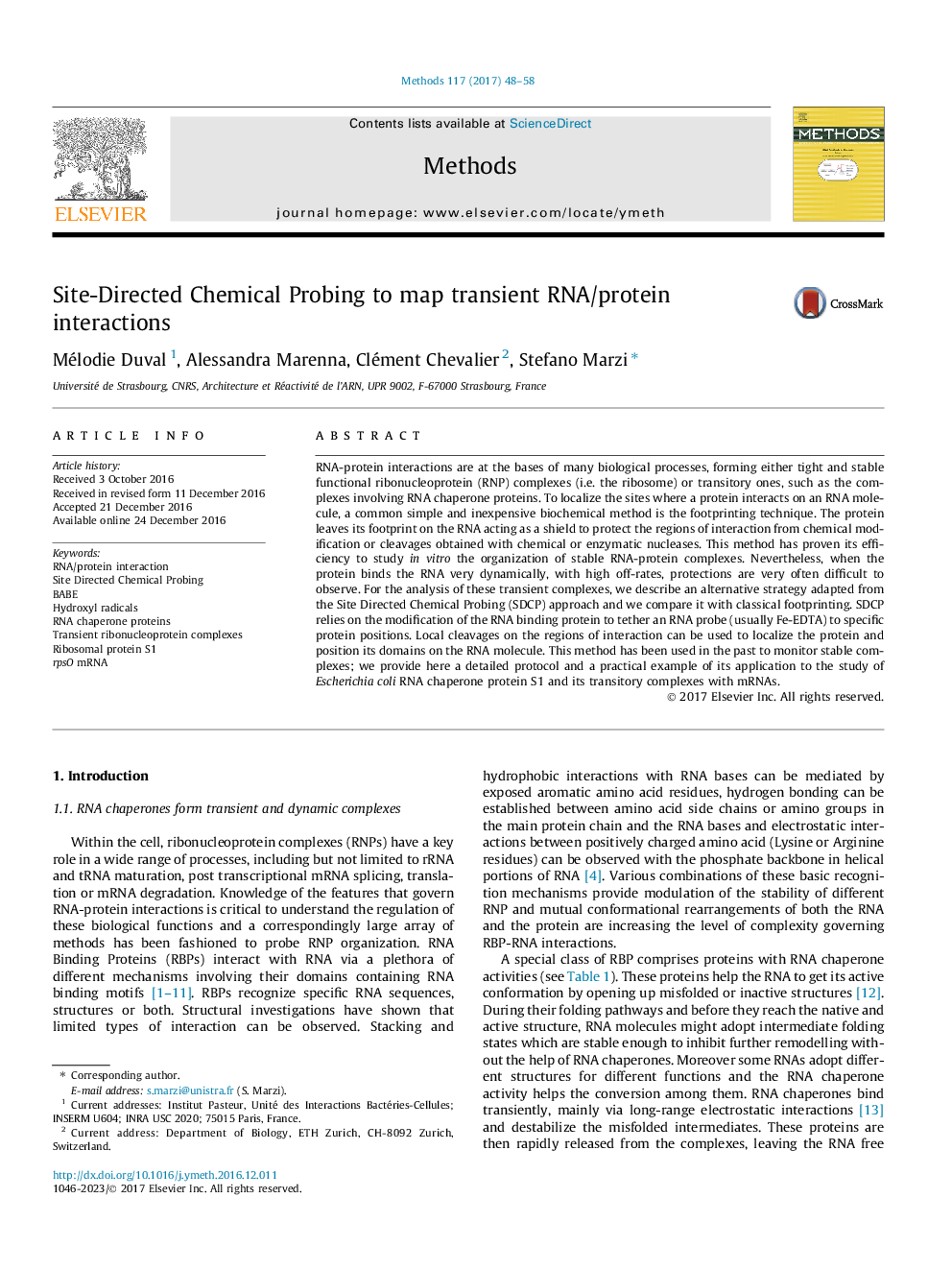| کد مقاله | کد نشریه | سال انتشار | مقاله انگلیسی | نسخه تمام متن |
|---|---|---|---|---|
| 5513465 | 1541209 | 2017 | 11 صفحه PDF | دانلود رایگان |

- Detailed protocol for Site Directed Chemical Probing to investigate transiently formed RNP complexes.
- Analysis of advantages and drawbacks of SDCP and comparison with classical footprinting approach.
- New and inexpensive method for detecting protein derivatization with Fe-BABE.
- Detailed procedures for both qualitative and quantitative data analysis.
- Practical example: analysis of RNA chaperone S1 - rpsO mRNA interaction.
RNA-protein interactions are at the bases of many biological processes, forming either tight and stable functional ribonucleoprotein (RNP) complexes (i.e. the ribosome) or transitory ones, such as the complexes involving RNA chaperone proteins. To localize the sites where a protein interacts on an RNA molecule, a common simple and inexpensive biochemical method is the footprinting technique. The protein leaves its footprint on the RNA acting as a shield to protect the regions of interaction from chemical modification or cleavages obtained with chemical or enzymatic nucleases. This method has proven its efficiency to study in vitro the organization of stable RNA-protein complexes. Nevertheless, when the protein binds the RNA very dynamically, with high off-rates, protections are very often difficult to observe. For the analysis of these transient complexes, we describe an alternative strategy adapted from the Site Directed Chemical Probing (SDCP) approach and we compare it with classical footprinting. SDCP relies on the modification of the RNA binding protein to tether an RNA probe (usually Fe-EDTA) to specific protein positions. Local cleavages on the regions of interaction can be used to localize the protein and position its domains on the RNA molecule. This method has been used in the past to monitor stable complexes; we provide here a detailed protocol and a practical example of its application to the study of Escherichia coli RNA chaperone protein S1 and its transitory complexes with mRNAs.
Journal: Methods - Volume 117, 15 March 2017, Pages 48-58